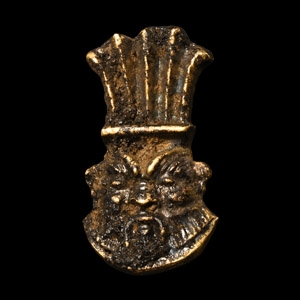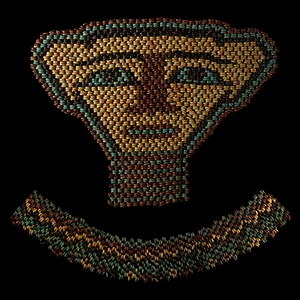Home > Auctions > 5 - 9 March 2024: Ancient Art, Antiquities,
Natural History & Coins
Auction Highlights:
Collected between the 1950s-1990s.
Ex Roger Liechti (1934-2010) collection, Geneva, Switzerland.
Cf. NFA Classical Auctions, Scarabs and Design Amulets, December 11, 1991, item 280.
From an early 20th century collection.
Accompanied by a previous catalogue information slip.
Cf. a similar amulet in hematite (Ptolemaic-Roman Age) in the Louvre, inventory no.E10944, in Quack, J. F., Altägyptische Amulette und ihre Handhabung, Tübingen, 2022, p.350.
Ex collection Charles Bouché, (1928 - 2010).
Accompanied by an academic report by Egyptologist Paul Whelan.
Accompanied by a copy of a French cultural passport no.139368.
Accompanied by old sketches of the artefact together with a provisional translation of the hieroglyphic inscription in French; mentioning the god Osiris.
This lot has been checked against the Interpol Database of stolen works of art and is accompanied by search certificate no.11845-206822.
Cf. Israel Museum, inv.no.76.18.271, for a heart scarab in green schist; see Cohen Collection of Egyptian Antiquities, inv.no.249, for a small heart scarab in carnelian.
From a 1920s French collection.
Ex German gallery, 1970-1980s.
Spanish collection, 1980s-1990s.
London, UK, collection, 2000s.
This lot has been checked against the Interpol Database of stolen works of art and is accompanied by search certificate no.12126-214208.
The Four Sons of Horus were deities responsible for protecting the internal organs of the deceased. The human-headed Imsety protected the liver, the baboon-headed Hapy protected the lungs, the jackal-headed Duamutef protected the stomach, and the falcon-headed Qebehsenuef protected the intestines.
Acquired in the 1970s.
European private collection.
Cf. Schoske, S., Schönheit - Abglanz der Göttlichkeit. Kosmetik im Alten Ägypten, Munich, 1990, p.142, no.127, for a similar Hathor head element on a near complete sistrum.
This fragment is the central element of a highly decorative sistrum. The sistrum was a rattle-like instrument played exclusively by women in religious ceremonies. The sound produced by the sistrum was believed to drive away evil and soothe a god's anger. Hathor is the daughter of the sun god Re, and in her role as a mother goddess is often depicted as a cow or with bovine characteristics as here. Hathor is also associated with love, music and dancing, and the sistrum is one of her sacred symbols.
with Bonhams, Antiquities, 21 October 1999, no.432-436.
Cf. Petrie, W.M.F., Amulets. Illustrated by the Egyptian Collection in University College, London, 1914, pl.II, no.20d, for a similar example.
From the vendor's grandfather's collection, formed in the 1950s; thence by family descent circa 1974.
Cf. similar amulet in the Louvre, inventory no.E 19009.
with Christie’s, London, 10 December 1986, no.64 (part).
Property of a gentleman.
Accompanied by copies of the relevant Christie's catalogue pages.
This lot has been checked against the Interpol Database of stolen works of art and is accompanied by search certificate no.12130-214291.
Cf. Andrews, C., Amulets of Ancient Egypt, London, 1994, p.84, fig.86, for two similar examples of stone snake heads dated to the New Kingdom.
From an early 20th century French collection.
Cf. Andrews, C., and van Dijk, J., Objects for Eternity: Egyptian Antiquities from the W. Arnold Meijer Collection, Mainz am Rhein, 2006, p.217, no.3.27, for a less fine example.
Bes became one of ancient Egypt's most popular apotropaic deities from the New Kingdom onwards. Despite his rather fearful appearance, Bes was the patron and protector of pregnant women and children. He was also believed to provide protection from snakes.
From an early 20th century French collection.
Cf. Andrews, C., Amulets of Ancient Egypt, London, 1994, item 29(c).
The goddess Bastet was believed to be the daughter of the sun god and was shown with the features of a lion up until about 1000 B.C. when she was first portrayed as a cat or human with a cat head. As the daughter of Ra she was associated with the rage inherent in the sun god's eye which was considered to be his instrument of vengeance. Her development into a cat goddess occurred during the New Kingdom but did not fully develop until the Late Period. She was still associated with the destructive power of the sun and was shown on the prow of the solar boat, decapitating the evil serpent Apophis in the Book of the Dead. The maternal, protective and hunting characteristics of the cat are obvious in Bastet and she was seen as a protector of pregnant women and young children. In the Pyramid Texts she is invoked by the deceased king to act as his protector and to help him reach the sky to join the sun god; the king proclaims that Bastet is his mother and nurse. Like her counterpart, Sekhmet, Bastet has an aggressive side and, in a text from Karnak, Amenhotep II described his enemies being slaughtered like the victims of Bastet. The goddess had a shrine at Karnak, where she is known as the 'Lady of Asheru' which aligns her closely with the goddess Mut, the consort of Amun-Ra. Her most famous shrine was in the north-east Delta region, at Bubastis, and was known as Per-Bastet or 'the House of Bastet.' Herodotus describes the festival of Bastet as one of the most elaborate in all of Egypt and identifies her with the Greek Artemis. Cemeteries of cats have been excavated at Bubastis and at Saqqara and Memphis.
Ex collection of Mr & Ms François & Marion Reber - Burki, Rue des Beaux-Arts 10, Neuchâtel, Switzerland.
Collected in the first part of 20th century by Mr F. Burki, father of Ms Marion Reber.
Cf. Manley, B., and Dodson, A., Life Everlasting. National Museum of Scotland Collection of Ancient Egyptian Coffins, Edinburgh, 2010, p.114, no.43, for a similar mask and collar.
From the collection of the late W. Harding Smith (1848-1922).
with Sotheby, Wilkinson & Hodge, 34 & 35 New Bond Street, 2 November 1922, no.234.
Old handwritten label to verso reading 'From ‘....’ ‘....’ collection Sale Sotheby 2 Nov 1922 L.N.234...'
Accompanied by an academic report by Egyptologist Paul Whelan.
Accompanied by a copy of the 1922 Sotheby, Wilkinson & Hodge catalogue pages.
Cf. Munro, P., Die spätägyptischen Totenstelen, 2 vols., Ägyptologische Forschungen 52, Glückstadt, 1973, vol.2, pl.3, fig.12, for a stela with similar format; for an example with a three-line border see British Museum EA22919; or with a plain, single-coloured band with thin outer and inner delimiting lines see Cairo Museum A9444.
1 - 12 of 2726 LOTS

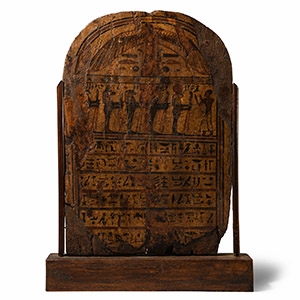
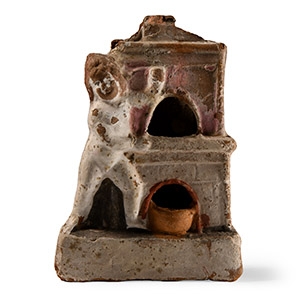

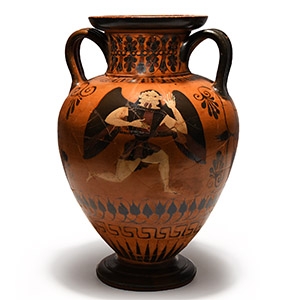
.jpg)
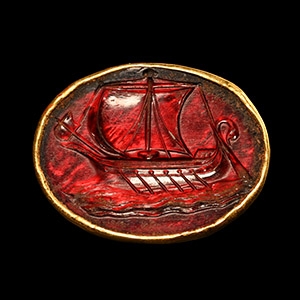
.jpg)

.jpg)
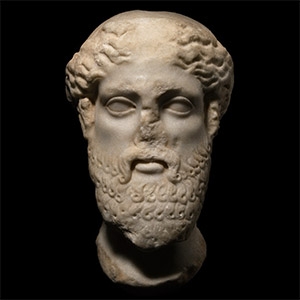
.jpg)
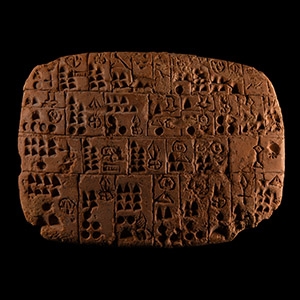

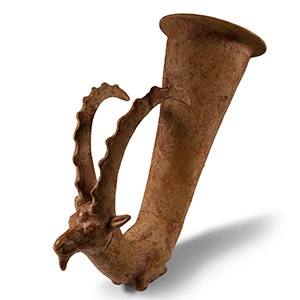
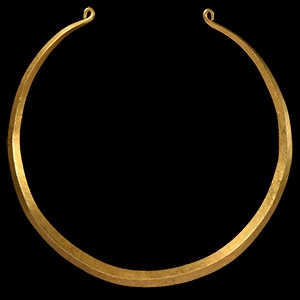
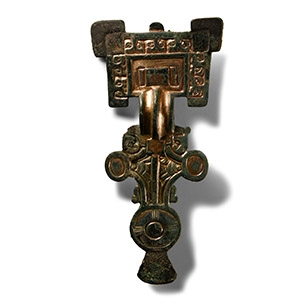
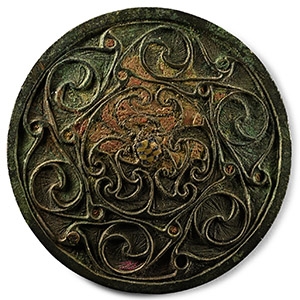

.jpg)
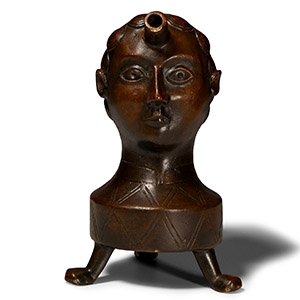
.jpg)

.jpg)
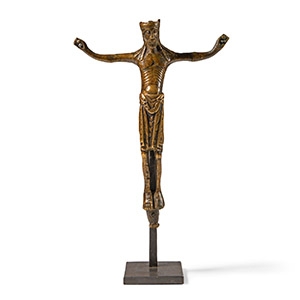
.jpg)

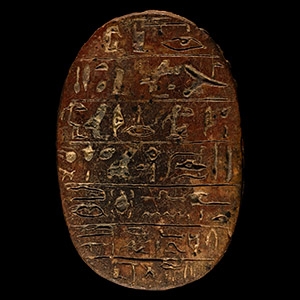

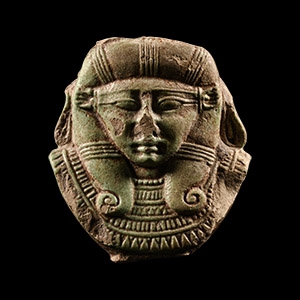

.jpg)

